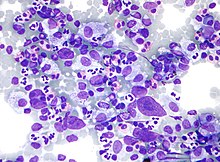We elected to put him down while he was still sedated from the needle aspirate. Prognosis tends to be better for cats with this grade with an average survival rate of approximately two to three years.
 Prognosis And Life Expectancy For Feline Lymphoma Vlog 99 Youtube
Prognosis And Life Expectancy For Feline Lymphoma Vlog 99 Youtube
A board certified veterinary.
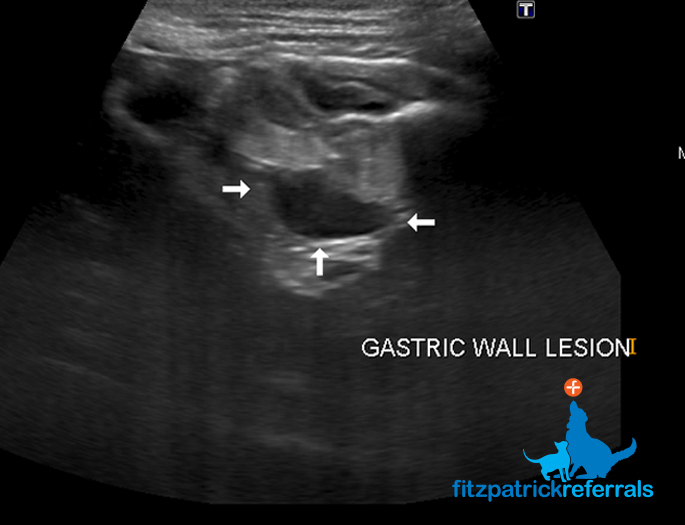
How long can a cat live with gastrointestinal lymphoma. If your cat has been diagnosed with low grade lymphoma then well usually prescribe chlorambucil and prednisolone. If you do nothing or if the treatments no longer work in end-stage lymphoma the average life expectancy is. How Long Do Cats With Lymphoma Live.
Also if the lymphoma has spread to other organs and has affected the lungs the prognosis is not good. Cats treated for small cell intestinal lymphoma often live 2-3 years and some can even discontinue chemotherapy. If your cat has intestinal lymphoma or lymphoma in addition to IBD you may also want to stay away from those ingredients.
Your cat can never be cured of lymphoma but may experience remission for up to 4 years. Kiselow et alreported a duration of 897 days for first clinical remission in cats achieving a complete response which compares favorably with the DFI reported herein of 786 days5Similarly the study by Fondacaro et alreported a median DFI of 615 days. Life expectancy of cats with lymphoma depends on many factors such as where the cancer is and how early it was diagnosed and treated.
Cats who are treated for lymphoma can get almost two years of life much of it with little or no pain. The average remission for low-grade lymphoma is 2-3 years meaning 2-3 years without any signs of disease. How Long Will My Cat with Lymphoma Live.
Chemotherapy for high-grade gastrointestinal lymphoma is poor. We have consented to chemotherapy treatments but are second guessing ourselves. Renal and mediastinal lymphoma have a poorer prognosis and even aggressive chemotherapy can sometimes only buy these cats six months.
However if your cats lymphoma is advanced the outlook is not so positive. The clinical response for low-grade. However occasionally cats can potentially be cured living up to 25 years or longer.
More aggressive forms of lymphoma like large cell lymphoma may only survive months despite multi-agent chemotherapy. High-grade lymphoma in cats has a standard life expectancy of 3-10 months even with aggressive treatment. If the cat doesnt receive any treatment the life expectancy cannot exceed 3 months and is 4 to 6 weeks on average.
This disease can therefore vary from something which cats can live with for some time without illness to a rapidly progressive and fatal condition. Our cat was just diagnosed with lymphoma found in the spleen and liver. Generally speaking the life expectancy is between 4 weeks to 2 years.
However if predinisone is combined with other drugs to treat the lymphoma a. Few cats live longer than 14 or 15 months after their diagnosis. She is 16 years old and we were told her treatment would take 16-20 weeks and her lifespan expectation would be 9-10 months.
A cat with intestinal lymphoma will be given a high dose of prednisone with his chemotherapy treatment. This is a spectrum of diseases including low grade lymphoma high grade lymphoma and large granular lymphocyte lymphoma LGL. Feline gastrointestinal lymphoma.
I mistakenly thought that Olivers sedation was him sleeping. I have a cat with IBD who cannot tolerate corn wheat or soy in any amount or she has problems with diarrhea so I tried to stay away from those ingredients since she would eat whatever was left by Jean-Luc. If the cat is affected also by the leukemia virus the life expectancy can be of a few months.
Among the 5 cats with GI lymphoma the median duration of remission was 52 days compared with 522 and 264 days for cats with mediastinal or extranodal disease respectively16. The prognosis for lymphoma depends on many factors High-grade gastrointestinal lymphoma however does not respond as well to treatment. With this treatment about 50 to 70 of cats can achieve complete remission ie.
They didnt say after treatment or including treatment time. The disappearance of all signs of cancer and live on average between 4 and 12 months. It is usually administered over four months.
Depending on the type of lymphoma and the response to chemotherapy cats with lymphoma can live for up to three years. Ifwhen you make the decision to euthanize your cat have him put to sleep then euthanized. My best friend Oliver had Lymphoma in his chest and intestines.
A cat that is treated with prednisone alone can live up to 60 days longer if he has intestinal lymphoma. Like with dogs the answer is. Only 25-50 of cats with high-grade lymphoma achieve remission with treatment.
The treatment and prognosis is largely dependent on the type of gastrointestinal lymphoma as outlined above.
If you have early-stage mantle cell lymphoma you might be offered radiotherapy to the affected area. In that time a wide variety of treatmentsincluding chemotherapy radiotherapy stem cell transplantations and immunotherapyhave been applied to patients with mantle cell lymphoma with varying results none of them especially convincing or leading to much enthusiasm in the research community.
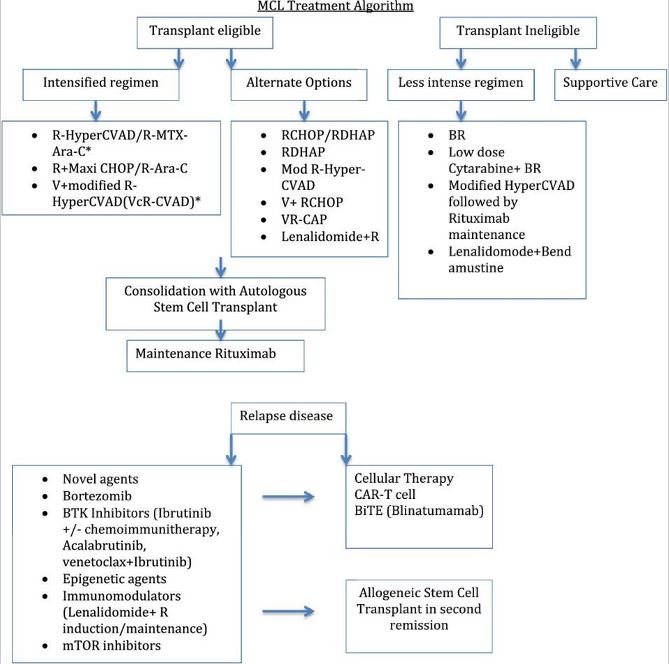 Va Has More Options As Treatment For Mantle Cell Lymphoma Expands Rapidly U S Medicine
Va Has More Options As Treatment For Mantle Cell Lymphoma Expands Rapidly U S Medicine
We examined consecutive stage I or II MCL 41 cases diagnosed between 2000 and 2016 in 16 institutions of the Consortium for Improving Survival of Lymphoma group.

Treatment for stage 4 mantle cell lymphoma. All cases were pathologically confirmed and systemic evaluation was performed for staging. Most people have advanced stage mantle cell lymphoma when they are diagnosed. Age 65-70 or non-transplant eligible Age 65-70 and transplant eligible.
Then bone marrow transplant if needed. A frequently aggressive yet incurable lymphoma the goal of therapy for MCL is to turn a potentially life-threatening illness into a chronic disease with prolonged periods of remission. 6 cycles bendamustine rituximab Rituxan BEAM chemo before autologous stem cell transplant 2 years maintenance chemo Rituxan Favorite 0.
It has been identified as diagnostic and. This lets your doctor use stronger chemotherapy than they would if stem cells werent available. Early-stage mantle cell lymphoma.
To treat stage 4 DLBCL your doctor will likely recommend chemotherapy. What is the treatment for mantle cell lymphoma. Deregulate cell cycle control by overcoming the suppressor effect of retinoblastoma 1 and the cell cycle inhibitor p27 4.
SOX11 is a neural transcription factor that is expressed in nearly 90 of the cases. Newly Diagnosed Stage II -IV Mantle Cell Lymphoma. A randomised open-label phase 3 trial of the European Mantle Cell Lymphoma Network.
Rituximab Rituxan in combination with other chemotherapy drugs typically treats patients who have MCL. Mantle cell lymphoma stage 4. For example they may recommend the R-CHOP chemotherapy regimen.
Chemotherapy combination drugs can include. Bump in back of head extreme fatigue acute weight loss. Doctors use a variety of tools to help people with cancer balance the risks and potential gains from anti-cancer therapy.
Hermine O Hoster E Walewski J et al 2016 Addition of high-dose cytarabine to immunochemotherapy before autologous stem-cell transplantation in patients aged 65 years or younger with mantle cell lymphoma MCL Younger. Another phase 3 non-inferiority multi-centre study by the StiL group Rummel et al 2013 compared BR with R-CHOP as first line treatment for patients with indolent and mantle cell lymphomas reporting improved PFS in the BR group 695. Treating Advanced Stage IV Mantle Cell Lymphoma.
They can replace cells that chemotherapy kills. Rituxan is a monoclonal antibody used to treat different cancers of the lymphoid cells. Stage Early stage disease Stage I or II Not common Radiation alone Combination of chemotherapy and radiation.
The clinical features were reviewed and the treatment outcomes were analyzed. There is currently no clear-cut consensus on the best specific front-line therapy for stage IV MCL. My husband was diagnosed with stage 4 MCL a month ago.
Newer chemotherapy drugs used for MCL include. However the general consensus is one of several forms of combination chemotherapy followed by immunotherapy maintenance a stem cell transplant or in some cases the recommendation of a clinical trial. This involves a combination of the drugs cyclophosphamide.
Candy W Mantle Cell Lymphoma MCL Stage 4. More aggressive stage IV or recurrent lymphoma often requires more intensive treatment such as stem cell transplantation with high-dose chemotherapy. Stage 3 or stage 4 mantle cell lymphoma is known as advanced-stage lymphoma.
Mantle cell lymphoma MCL predominantly affects older adults with a median age at diagnosis of 70years. Treatment is chemo plus Rituxan once a month for 6 months. Treatment for stage 4 Hodgkin lymphoma typically involves multiple cycles of chemotherapy drugs.
CCND1- negative MCL cases were positive for overexpression of CCND2 or D3 2.
Diagnosis - grading and staging. You will not know the difference from the normal lymph nodes and there is a need for biopsy to know about the malignancy presence.
 13 Best Lymphoma In Dogs Ideas Lymphoma In Dogs Lymphoma Dogs
13 Best Lymphoma In Dogs Ideas Lymphoma In Dogs Lymphoma Dogs
Single lymph node enlargement stage I regional lymph node enlargement stage II generalized lymph node enlargement stage III liver andor spleen involvement stage IV and bone marrow and blood involvement stage V.

What are the stages of lymphoma in dogs. Bones liver mouth eyes. To confirm a diagnosis decide on the best treatment plan and predict their survival time your vet will perform a number of tests to grade and stage your dogs lymphoma. More than one lymph nodes is involved on the front or the back of the body.
Only one lymph node is involved. What are the final stages of lymphoma in dogs. Dogs with alimentary lymphoma which affects the intestines may present with.
You should always consult your vet to learn. Dogs can have 5 different stages of lymphoma. This is rare but lymphoma can actually affect any part of your dogs lymph tissue.
Until over time dogs with more advanced Canine Lymphoma may also show some or all of the following symptoms. Staging - tells us where lymphoma is and whether it has spread around the body. Canine Lymphoma is diagnosed in stages.
What are the stages of lymphoma in dogs. Can Dog Lymphoma Be Cured. Lymphoma is one of the most common forms of cancer that can be contracted by a dog.
The final stage of Lymphoma known as Stage 5 usually occurs when the cancer spreads to the bone marrow of your pet. Stage I and II are rarely seen in dogs while Stages III-V are more common. Lymphoma is categorized into five stages depending on the extent of the disease in the body.
There are several stages of dog lymphoma. Dogs with multicentric lymphoma may also develop lethargy fever anorexia weakness and dehydration as the disease progresses. There are five stages of lymphoma.
The first symptom that dogs with multicentric lymphoma usually show is swollen lymph nodes. Stage 2 lymphoma involves two or more lymph nodes in a specific area of the body. It is important to seek treatment as soon as possible to deal with the disease as effectively as possible.
In most schemas there are five stages with stage five being the last most serious stage. Stage 1 where the lymphoma is restricted to a single lymph node in the body or in an organ. In these cases dogs may not exhibit any symptoms but the lymphoma will continue to develop.
Sadly this illness doesnt take prisoners. The most common stages that dogs have are stage 3 where the lymph nodes that can be felt under the skin are involved or stage 4 liver andor spleen involvement with enlarged lymph nodes. Multiple lumps are discovered affecting both the front and back halves of the body.
It is common for dogs with lymphoma to have lymph nodes 3-to-10 times their normal size. Because lymphoma in dogs can be difficult to diagnose it is rarely diagnosed in the early stages. A single lump is discovered affecting one lymph node.
Involves lymph nodes on only one side of the diaphragm only affects the front of the body or rear. Are a result of lymph node enlargement. Stages of Lymphoma in Dogs.
If your dog displays any of the following. Stage 4 lymphoma manifested in the dogs spleen or liver. Although lymphoma in dogs.
The homogenous population is small but mature. It is often found in Stage III or later. These swellings are not painful and feel like a firm rubbery lump that moves freely underneath the skin.
The first sign that dogs with multicentric lymphoma usually reveal is inflamed lymph nodes. Cytology on lower grades or small cell is known because it progresses slowly instead of the large cell lymphoma. Lymphoma in dogs often starts off by affecting a single lymph node then progresses to other nodes in the same part of the body eventually affecting other organs in the body.
What are the stages of lymphoma in dogs. Additionally because dogs instinctively hide disease it can be hard to tell that they are sick. Involves only a single lymph node.
Canine Lymphoma Symptoms in Later Stages as the disease progresses In addition to the symptoms noted above as the disease progresses your dog may encounter some or all of the following symptoms. Stage 3 lymphoma is generalized in nature and involves several lymph nodes around the body. Lymphoma of the skin tissue is usually the most obvious to diagnose as it can sometimes be seen and felt as red lumps on the skin.
It prevails for dogs with lymphoma to have lymph nodes 3-to-10 times their normal size. Many lymph nodes are involved. This form of cancer also known as non-Hodgkins lymphoma or lymphosarcoma is a malignant cancer that involves the lymph nodes and lymphoid system.
Grading - tells us how aggressive the lymphoma is. Other organs are involved including the spleen or liver. Definitions of these stages are as follows.
Dogs with multicentric lymphoma may also develop lethargy fever anorexia weakness and dehydration as the disease progresses. This is also called terminal or end-stage lymphoma and represents the point when all of the dogs organs are involved and further treatment is unlikely to result in remission. What signs of illness do most dogs with Lymphoma show.
Multiple lumps are discovered affecting either the front or back half of the body. This is especially true in the early stages. Staging ranges from Stage 1 with just one lymph node enlarged.
There are two main stages of the canine Lymphoma.
It usually grows in lymph nodes -- the pea-sized glands in your neck groin armpits and. Regardless of how quickly they grow all non-Hodgkin lymphomas can spread to other parts of the lymph system if not treated.
B-cell lymphoma refers to a group of cancers that attack the immune system.

What is b cell lymphoma. Lymphoma is a cancer of the lymphatic system. Diffuse large B-cell lymphoma or DLBCL is a cancer that starts in white blood cells called lymphocytes. This may be followed by radiation to the mediastinum.
Abnormalities in these genetic events can cause chromosomal translocations and genomic mutations leading to altered expression and function of genes involved in B cell survival or proliferation and consequently B lymphomagenesis. There are many different types of the disorder classified by the kinds of cells they affect and the manners in which they spread. About 1 out of 5 lymphomas in the United States is a follicular lymphoma.
Follicular lymphoma -- a slow-growing form that mainly affects older adults Chronic lymphocytic leukemiasmall lymphocytic leukemia CLLSLL -- slow growing types that are closely related Mantle cell lymphoma --. This is usually a. Lymphomas are cancers of the lymphocytes a group of white blood cells that play a key role in the immune system.
B- cell lymphoma refers to types of non-Hodgkin lymphoma that are characterized by abnormalities of the B-cells a type of white blood cell that makes antibodies to help fight infection. B-cell lymphoma is a type of cancer that originates in white blood cells and lymphatic tissue. This is the most common type of NHL in the United States accounting for about 1.
If no active lymphoma is seen on. In fact B cell lymphoma accounts for 95 of the lymphomas. This lymphoma which starts in the space between the lungs the mediastinum is treated like early stage diffuse large B-cell lymphoma.
Although it can occur in childhood the occurrence of DLBCL generally increases with age and most. Types of B-cell Lymphoma Diffuse large B-cell lymphoma DLBCL. Types of B-cell lymphoma Diffuse large B-cell lymphoma.
The cells of this type of B-cell lymphoma grow in circular structures follicles generally within. Lymphocytes are one type of white blood cell. Small lymphocytic lymphoma.
It is the most common type of non-Hodgkin lymphoma. Chronic lymphocytic leukemia CLL. Often a PETCT scan is done after the chemo to see if theres any lymphoma remaining in the chest.
The condition may grow and spread slowly with few symptoms also known as indolent lymphoma or may be very aggressive with severe symptoms. Other types of B-cell non-Hodgkins lymphoma include. The cancer grows in the B cells also called B lymphocytes which.
Different kinds of lymphocytes for example B cells T cells and NK cells can give rise to different lymphomas. Diffuse large B-cell lymphoma DLBCL is a common type of fast-growing non-Hodgkin lymphomaIt develops when B-cells also called B-lymphocytes become abnormal. Those lymphomas that form in the steps of B-lymphocyte development are called B-cell lymphomas.
The most common type of aggressive lymphoma in the United States is diffuse large B cell lymphoma DLBCL. We explain what to expect if you have this. 13 Zeilen B-cell lymphoma is a type of non-Hodgkins lymphoma.
Diffuse large B-cell lymphoma DLBCL is the most common type of B-cell lymphoma. Some types of lymphoma like mantle cell lymphoma dont fit neatly into either of these categories. B-cells are lymphocytes that make antibodies to fight infections and are an important part of the lymphatic system.
A common treatment is 6 courses of CHOP chemo plus rituximab R-CHOP. There are two main types - Hodgkin lymphoma and non-Hodgkin lymphoma NHL.
A novel advancement for the treatment of lymphoma in dogs. Its very hard to put a smile on your face when your best friend faces a medical crisis.
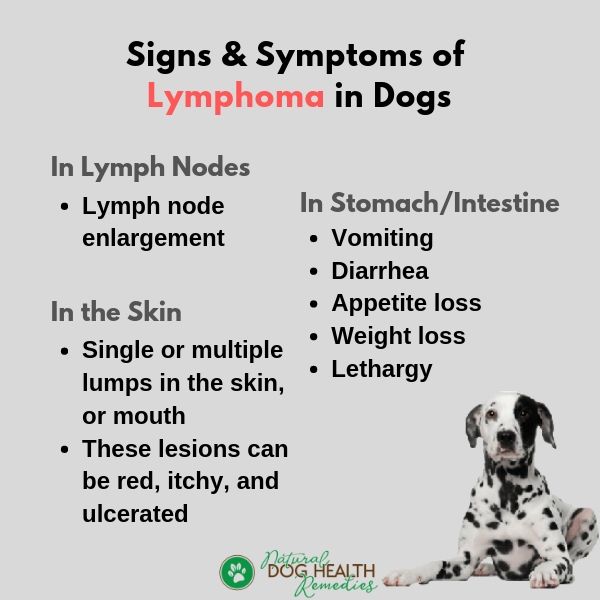 Lymphoma In Dogs Symptoms And Treatment
Lymphoma In Dogs Symptoms And Treatment
The most effective therapy for most types of canine lymphoma is chemotherapy.
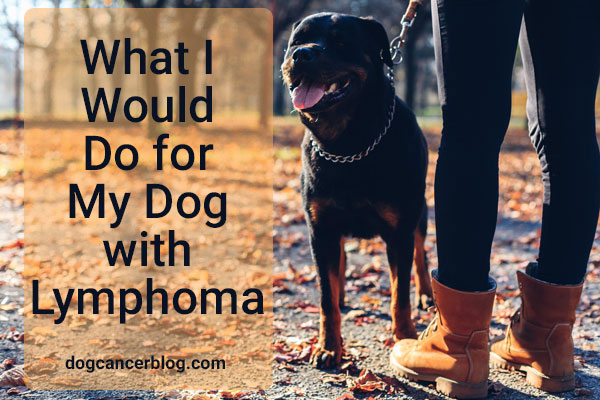
What is the best treatment for lymphoma in dogs. Chemotherapy can significantly extend your dogs survival time from a few months to possibly a year or more but response varies a lot and is impossible to predict because each case of lymphoma. TANOVEA-CA1 rabacfosadine for injection. Heart complications are extremely uncommon and your dog is at much greater risk if the lymphoma is not treated.
In each cycle the protocol includes vincristine cyclophosphamide and Adriamycin doxorubicin. Because of its effectiveness and potential for cure bone marrow transplants are often the treatment of choice for human Lymphoma patients. Dogs with Lymphoma CHOP Protocol This protocol is a cyclic protocol usually lasting 5 to 6 months.
The type of chemotherapy your vet recommends will vary depending on the type of cancer. As noted in the section on Canine Lymphoma Types most Canine Lymphoma cases are B-Cell Lymphoma the phenotype that responds best to conventional treatments that are available. Treating Lymphoma in Dogs The treatment therapy proven most effective for canine lymphoma is chemotherapy.
There are several canine lymphoma treatment approaches available including TANOVEA-CA1 generic chemotherapy radiation andor surgery. There is a wide variety of chemotherapy protocols and drugs that are currently being used to treat lymphoma. As long as these drugs are being used the exact protocol may not have much of an overall influence on canine patients.
Treatment of Lymphoma in Dogs There is currently no known cure for canine lymphoma but it is one of the most treatable types of cancer in dogs. Lymphoma is one of the most treatable cancers in dogs and recent developments in targeted therapies monoclonal antibodies and bone marrow transplantation could offer the hope of a cure in the future. Lymphocytes are an important part of a dogs immune system which protects the animal from infection.
We would always use this if we knew we were going to have to administer a significant number of doxorubicin. Freeman usually does NOT recommend for her patients is a Bone Marrow Aspirate. Do your best to be cheerful.
In summary the best protocol for lymphoma currently available for routine clinical use is a 5-drug protocol consisting of cyclophosphamide vincristine prednisone doxorubicin and L-asparaginase. One staging test that Dr. Now more than ever its critical to know the signs of cancer.
And if you suspect cancer you need to know the best treatment options available. Chemotherapy drugs attack cancer cells slow their growth and reduce tumour size. There is a medication that dramatically reduces the risk of heart-related problems.
Plus there are very few places in. Lymphoma is the canine tumor most frequently treated with chemotherapy. The dog will undergo chemotherapy as the first treatment for the dog lymphoma.
Some of the additional treatment options include Tanoveao-CA1 Prednisone and bone marrow transplant. What is the best treatment for dog lymphoma. Your veterinarian can help provide a prognosis and develop a treatment plan based on your dogs type and stage of lymphoma.
The type of chemotherapy your vet recommends will vary depending on the type of cancer and in some cases the vet may also suggest radiation therapy or surgery. The vet will prescribe drugs at lower doses for short-term side effects and minimal effect. However this process is very expensive and still has only limited success when used on dogs.
Lymphoma is a type of cancer that affects the white blood cells called lymphocytes of the dog. Some recommend feeding the dog whatever he seems to like best since his appetite will get pickier as the disease progresses. But he can sense your mood so the more you can do to stay positive the better.
Half of adult dogs today will get cancer. The most common treatment therapy for canine lymphoma is chemotherapy and it is one of the most effective methods. It is important to balance this though with.
Cancer is a terrifying reality for dog owners today causing nearly half the deaths of dogs over the age of 10. Such a diet for dogs with lymphoma should include plenty of protein with a balance of carbohydrates and fats. In the 1 st cycle usually the 1 st treatment the dog may also receive Elspar.
It is the most common hematopoietic neoplasia of dogs see Canine Lymphoma and cats and is also among the most responsive to chemotherapyFour antineoplastic agents vincristine cyclophosphamide doxorubicin and prednisone form the basis for many lymphoma treatment protocols. Lymphoma can involve many different organs in the body but it most often affects those areas that are part of the immune system such as the spleen the bone marrow and the lymph nodes.
